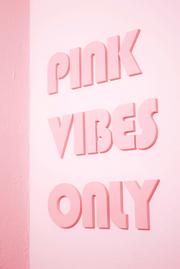How Color Psychology Impacts Brand Identity
“What’s your favorite color?”
It’s one of the first questions we’re ever asked as children; one of the first decisions we ever get to make on our own. Color is also one of the most primary and primal elements in our visual language. We’re encouraged to align ourselves emotionally with a specific hue of the spectrum at a very young age and may even be asked to explain why.
Of course, you may not understand why you love a particular color – no matter how old you are. But psychologists do. And it all comes down to association. Consciously or subconsciously, our minds attach meaning to certain colors based on significant personal experiences (both good and bad).
For instance, most of us have been taught that red is the color of danger. Red means stop. That’s a conscious association. But, over time, many of us also started associating the color red with love or our favorite soda (or even associating soda with love). Those are more subconscious associations based on what we’ve observed over time – in greeting cards and television ads.
But color psychology goes much deeper than that. It influences how we react to almost every experience; how we relate to virtually everyone and everything. It dictates the foods we like or dislike. It impacts our impression of products, people and their “packaging.” You might find yourself going out of your way to meet a particular person or buy a particular brand of cookies because they’re wrapped in a certain shade of green; one you subconsciously associate with childhood memories of driving to the cabin, because the diner you’d stop at had wallpaper that color.

We’ve all been told we shouldn’t judge a book by its cover. But if all book covers were white with black block type, could any of us ever choose? We not only associate colors with experiences but use them to categorize our beliefs and passions – from political parties to sports teams. People even argue over which shade of white to paint the walls of their home (and the term for these people is color-obsessed).
All of this illustrates the immense, powerful, permeating role that color plays in our everyday lives. Most people are oblivious to these subliminal influences. But those of us in marketing can’t afford to be.
As creative marketers, visual recall is critical in consolidating and clarifying our message. We do this in a number of ways, but one of the most important is through the use of color. It takes time and commitment to compel consumers to the point of seeing the combination of yellow and red and start craving your brand of French fries. But the reason certain brands enjoy strong color ownership is because they established color identity – and stuck to it.

Let’s go back to the childhood example. Pretend you aligned yourself with pink when you were 8 years old. What about now? Does changing your “favorite” color at age 35 mean you’re somehow betraying your 8-year-old self? Not necessarily. It just means your taste has changed.

Odds are, you still like the color pink, but it’s evolved to include different hues and intensities. Maybe you went through a black phase in high school (most of us did) but it’s a pretty safe bet you still have some affinity for pink, even if it’s not the color of your car, house and hair. Or maybe it is. In that case, kudos to your commitment.
But choosing colors that are right for your brand, product or advertising isn’t so subjective. It doesn’t matter what your favorite color is. What matters is what different colors symbolize to your target consumer and the emotions they often invoke. The most popular social media app today chose a palette consisting of overlapping blue, pink and black; not because they represented the favorites of top management, but because they produced a logo that signifies musical vibrations on a neon-lit stage. Together, the colors actually appear to vibrate visually.
Science has already proven that color creates psychological and even physiological responses. It is the first and foremost creative factor in promoting emotional engagement. Much more than words – including the words that make up your brand name. So, when it comes to creating brand experiences your consumers will appreciate and commit to, it’s hard to overstate the importance of color selection.
You don’t have to be a Gen Z social app for color to deliver a significant influence on your brand’s impact. Our senses store information on a subliminal level and brand palette can be a key aspect of your “visual voice.” Every brand must consider their core values, take a good look at their visual voice and conclude whether the two are singing in harmony.
In case you’re curious, my favorite color in this ethereal moment is Cherry Red. Why? That’s a subject for another blog.


